Abstract
Intracranial hemorrhage was the most serious hemorrhage as measured by death and disability, occurring during long-term anticoagulant drug therapy of 1,626 patients. Among 95 hemorrhagic episodes considered life-threatening or potentially crippling, 30 were intracranial and 56 were gastrointestinal. Over two-thirds of the patients with intracranial hemorrhage died, as against one-tenth of those with gastrointestinal hemorrhage.
The incidence of intracranial hemorrhage is increased among hypertensive patients, but the results of a controlled study indicate that the incidence of intracranial hemorrhage is not affected by whether or not the hypertensive patient is receiving anticoagulant therapy. Hypertension is the important precipitating factor, not the prothrombin level. Even at excessively low prothrombin levels only one intracranial hemorrhage occurred in 337 instances.
In this series, reducing coagulability to a desirable range did not increase the probability of intracranial hemorrhage. Once bleeding occurred, however, it increased the risk of death and disability.
Full text
PDF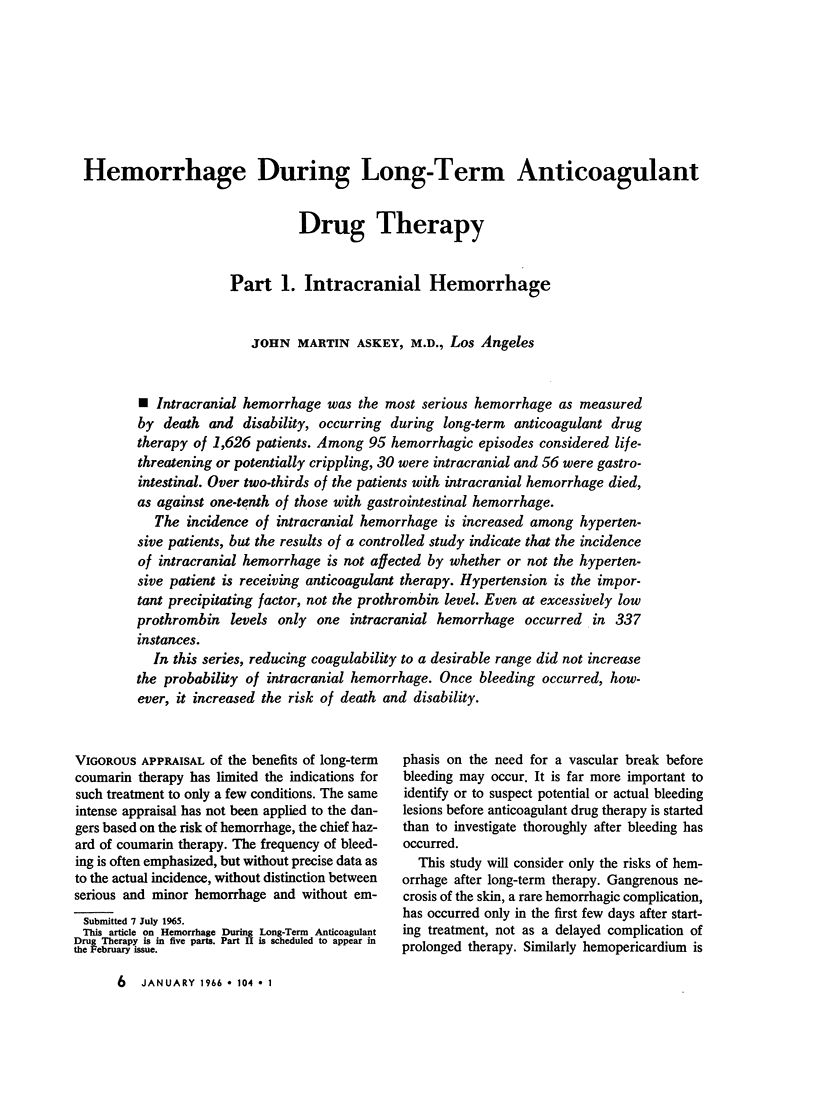
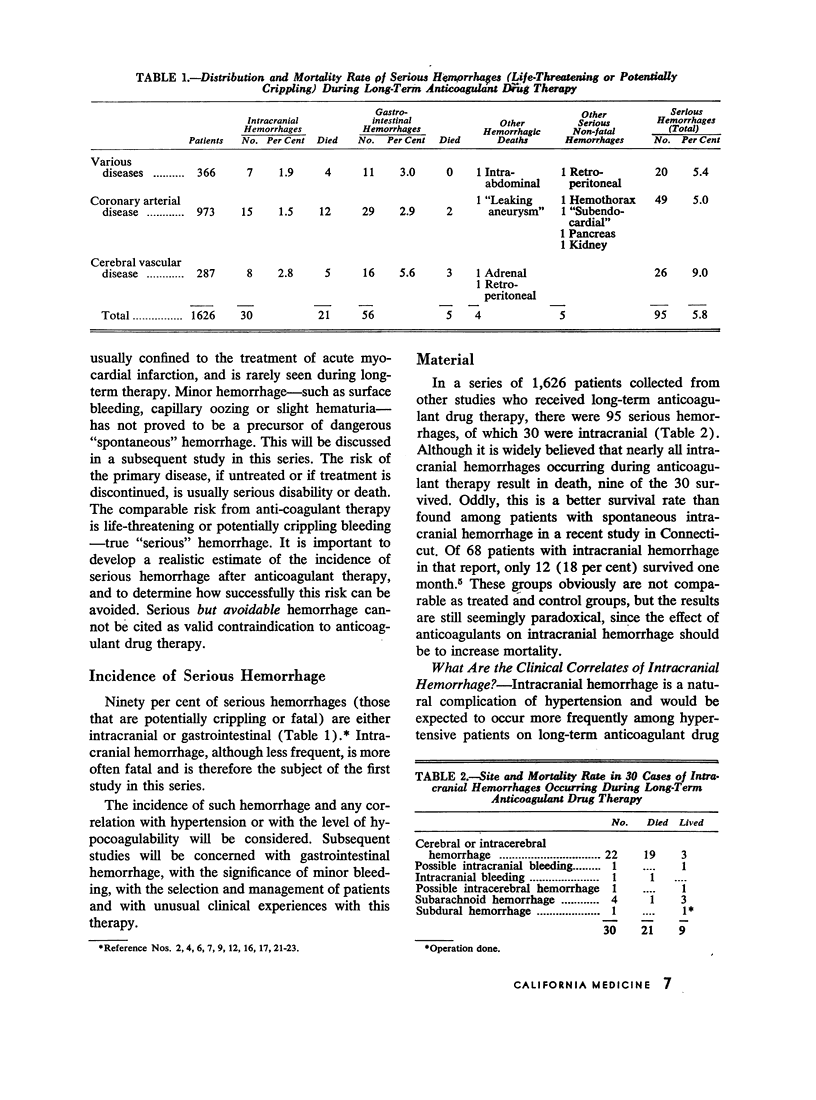
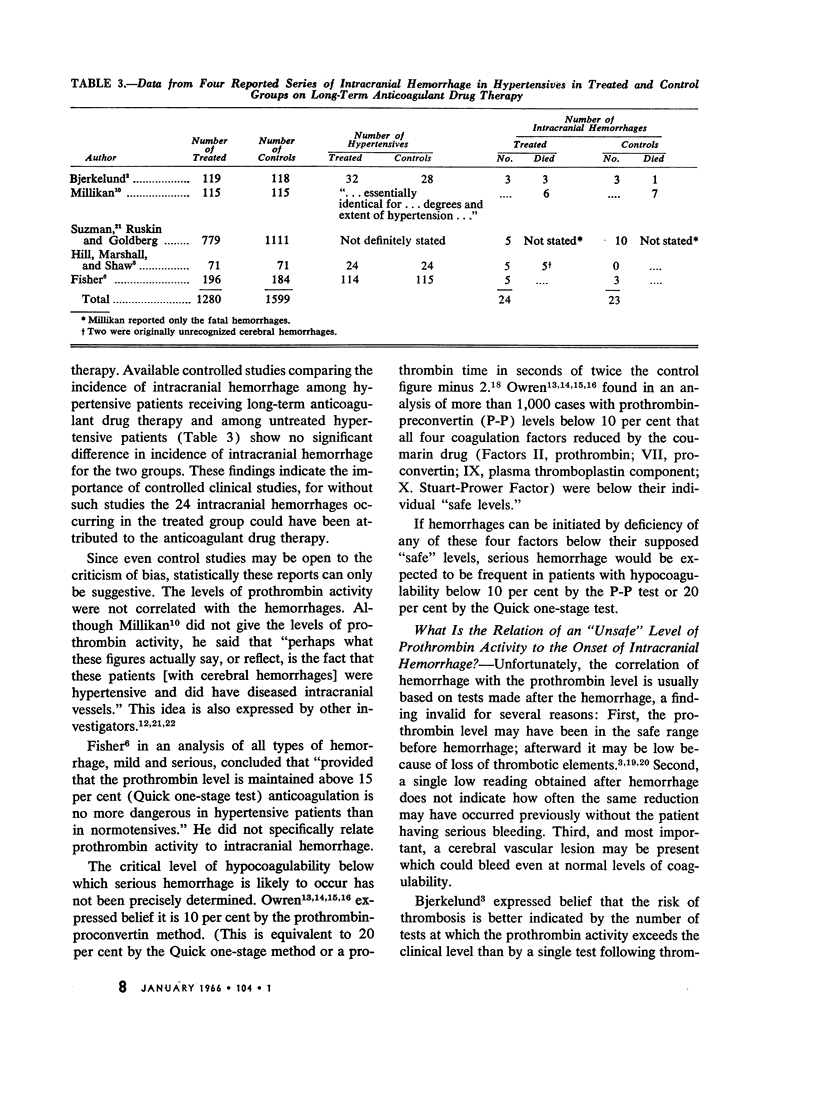
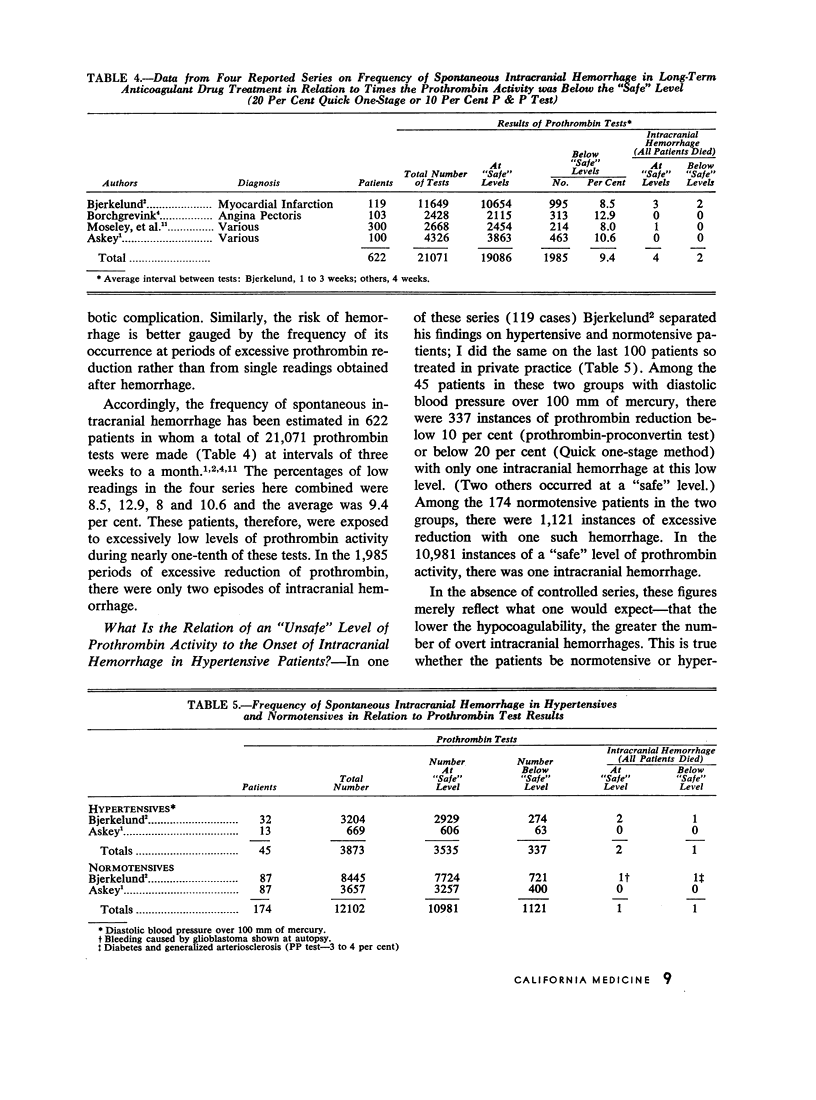
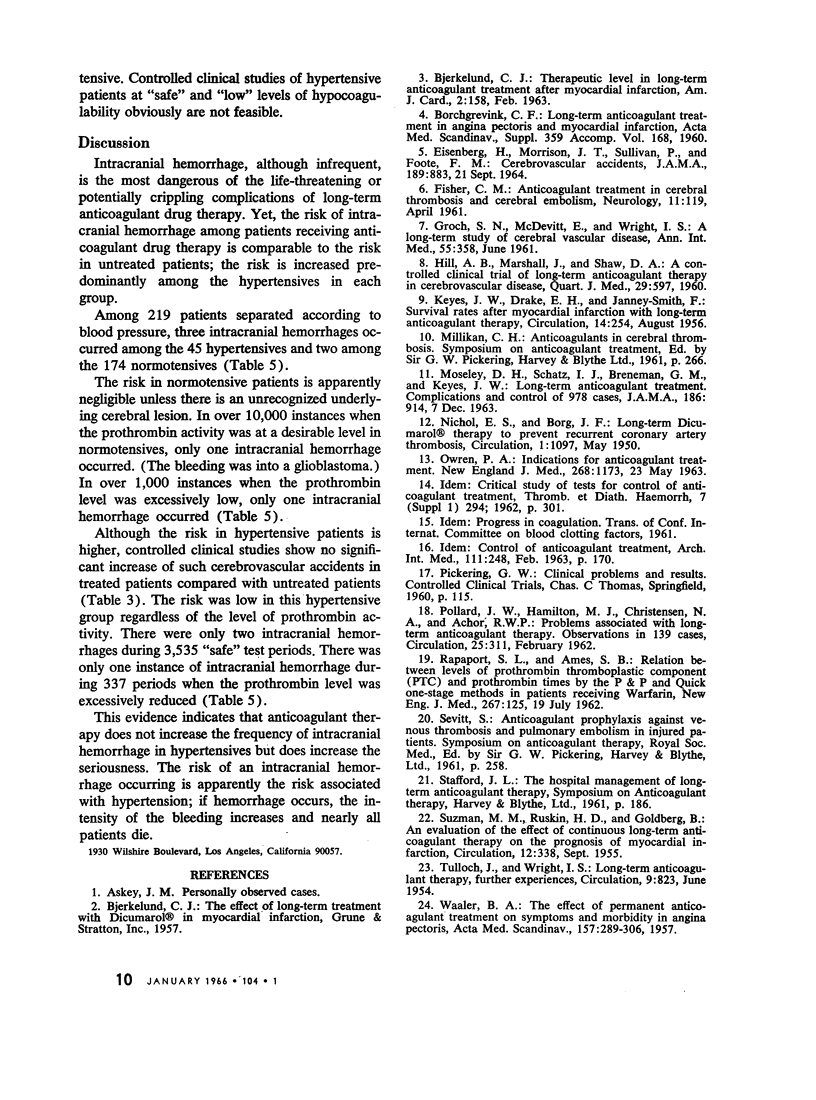
Selected References
These references are in PubMed. This may not be the complete list of references from this article.
- BJERKELUND C. J. Therapeutic level in long term anticoagulant therapy after myocardial infarction. Its relation to recurrent infarction and sudden death. Am J Cardiol. 1963 Feb;11:158–163. doi: 10.1016/0002-9149(63)90056-0. [DOI] [PubMed] [Google Scholar]
- DRAKE E. H., KEYES J. W., SMITH F. J. Survival rates after acute myocardial infarction with long-term anticoagulant therapy. Circulation. 1956 Aug;14(2):254–259. doi: 10.1161/01.cir.14.2.254. [DOI] [PubMed] [Google Scholar]
- EISENBERG H., MORRISON J. T., SULLIVAN P., FOOTE F. M. CEREBROVASCULAR ACCIDENTS. INCIDENCE AND SURVIVAL RATES IN A DEFINED POPULATION, MIDDLESEX COUNTY, CONNECTICUT. JAMA. 1964 Sep 21;189:883–888. [PubMed] [Google Scholar]
- FISHER C. M. Anticoagulant therapy in cerebral thrombosis and cerebral embolism. A national cooperative study, interim report. Neurology. 1961 Apr;11(4):119–131. doi: 10.1212/wnl.11.4_part_2.119. [DOI] [PubMed] [Google Scholar]
- GROCH S. N., McDEVITT E., WRIGHT I. S. A long-term study of cerebral vascular disease. Ann Intern Med. 1961 Sep;55:358–367. doi: 10.7326/0003-4819-55-3-358. [DOI] [PubMed] [Google Scholar]
- HILL A. B., MARSHALL J., SHAW D. A. A controlled clinical trial of long-term anticoagulant therapy in cerebrovascular disease. Q J Med. 1960 Oct;29:597–609. [PubMed] [Google Scholar]
- MOSLEY D. H., SCHATZ I. J., BRENEMAN G. M., KEYES J. W. LONG-TERM ANTICOAGULANT THERAPY. COMPLICATIONS AND CONTROL IN A REVIEW OF 978 CASES. JAMA. 1963 Dec 7;186:914–916. [PubMed] [Google Scholar]
- NICHOL E. S., BORG J. F. Long-term dicumarol therapy to prevent recurrent coronary artery thrombosis. Circulation. 1950 May;1(5):1097–1104. doi: 10.1161/01.cir.1.5.1097. [DOI] [PubMed] [Google Scholar]
- OWREN P. A. Indications for anticoagulant therapy. N Engl J Med. 1963 May 23;268:1173–contd. doi: 10.1056/NEJM196305232682108. [DOI] [PubMed] [Google Scholar]
- POLLARD J. W., HAMILTON M. J., CHRISTENSEN N. A., ACHOR R. W. Problems associated with long-term anticoagulant therapy. Observations in 139 cases. Circulation. 1962 Feb;25:311–317. doi: 10.1161/01.cir.25.2.311. [DOI] [PubMed] [Google Scholar]
- RAPAPORT S. I., AMES S. B. Relation between levels of plasma thromboplastin component (PTC) and prothrombin times by the P&P and Quick methods in patients receiving warfarin. N Engl J Med. 1962 Jul 19;267:125–130. doi: 10.1056/NEJM196207192670303. [DOI] [PubMed] [Google Scholar]
- SUZMAN M. M., RUSKIN H. D., GOLDBERG B. An evaluation of the effect of continuous long-term anticoagulant therapy on the prognosis of myocardial infarction: a report of 82 cases. Circulation. 1955 Sep;12(3):338–352. doi: 10.1161/01.cir.12.3.338. [DOI] [PubMed] [Google Scholar]
- TULLOCH J., WRIGHT I. S. Long-term anticoagulant therapy; further experiences. Circulation. 1954 Jun;9(6):823–834. doi: 10.1161/01.cir.9.6.823. [DOI] [PubMed] [Google Scholar]
- WAALER B. A. The effect of permanent anticoagulant therapy on symptoms and mortality in angina pectoris. Acta Med Scand. 1957 May 4;157(4):289–306. doi: 10.1111/j.0954-6820.1957.tb14439.x. [DOI] [PubMed] [Google Scholar]


